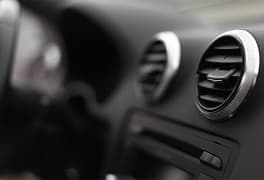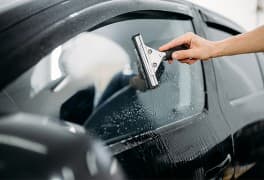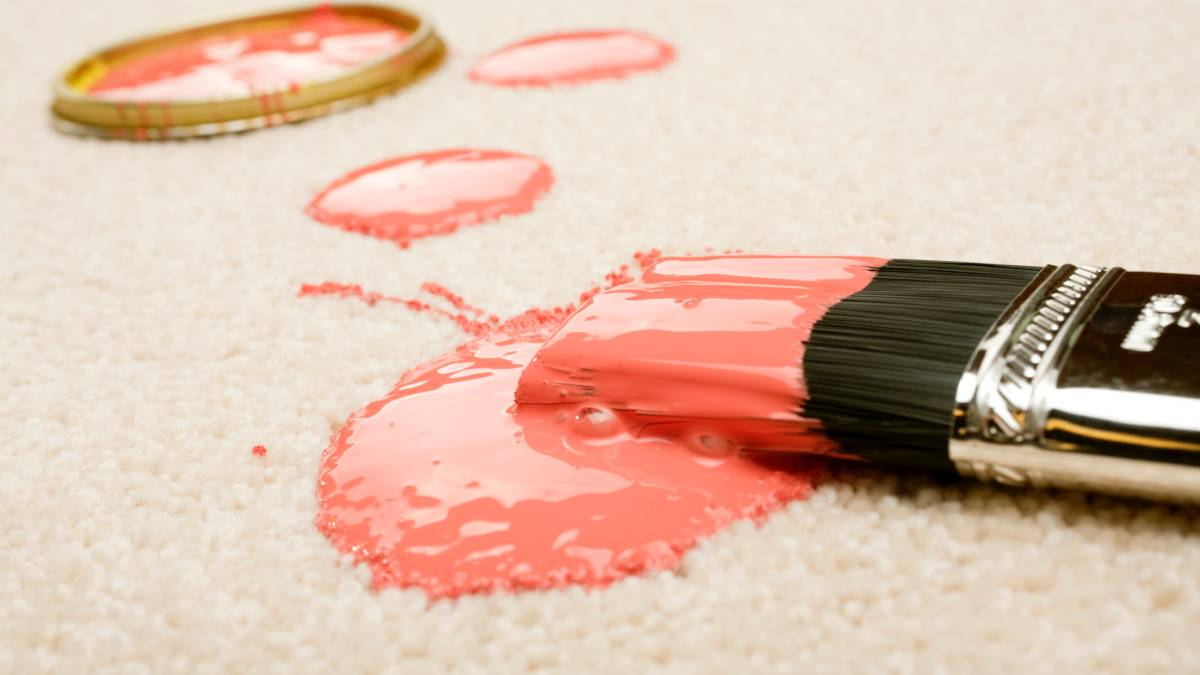
Find a local painter
- Inspiration /
- Lifestyle /
- Cleaning /
- How to get paint out...
How to get paint out of carpet
Know what to do when you spill paint on the carpet.
Paint spills are among the most common yet dreaded painting problems that could happen in spaces undergoing renovation or where creative projects are a regular activity. With their fibrous and absorbent nature, carpets can quickly soak up any paint, making it tricky to remove.
If you’re unlucky to have this problem on your hands, then let this guide help you! Here, we’ll explore the most effective strategies for how to get paint out of carpets. Whether you’re dealing with a fresh paint spill or the aftermath of a dried stain, these steps are designed to tackle the mess with as much ease and efficiency as possible.
Gearing up for the scrub
Before getting down to business, ensure you have the following tools ready for a faster and smoother process of removing paint from carpets.
Towels
Paper and cloth towels can quickly absorb as much fresh paint as possible, apply cleaning solutions gently, and aid in the drying process without much hassle.
Dish soap or vinegar and warm water
Dish soap and white vinegar make great and gentle cleaners suitable for tackling different types of paint, especially water-based ones.
Alcohol
Alcohol, specifically rubbing alcohol, can be used if you’re dealing with stubborn or semi-dry paints or paints that water or mild cleaners can’t dissolve on their own.
A toothbrush
You can use a soft-bristled toothbrush to gently scrub the affected area without damaging the carpet fibres.
Scraper, spoon, or dull knife
To help with the elbow grease, scrapers, spoons, or dull knives will be useful to remove dried paint from the carpet.
Depending on how long the paint has been on the carpet, the time it takes to remove it completely can vary. Similarly, the type of paint spilled will also affect the duration of the cleaning process, as some variants of paint can be more stubborn than others.
Water-based paint spills will be the easiest and fastest type of paint to clean, while dried paint will require more effort to remove. If the paint has been sitting for a long time, the process could extend beyond a couple of hours.
In some cases, multiple cleaning sessions may be necessary, spread out over a couple of days, especially if you’re trying to minimise carpet damage or dealing with a large spill.
Identifying the paint type
The cleaning process will partially depend on the type of paint spilled. It’s important to know the different paints as the removal process can differ significantly between them.
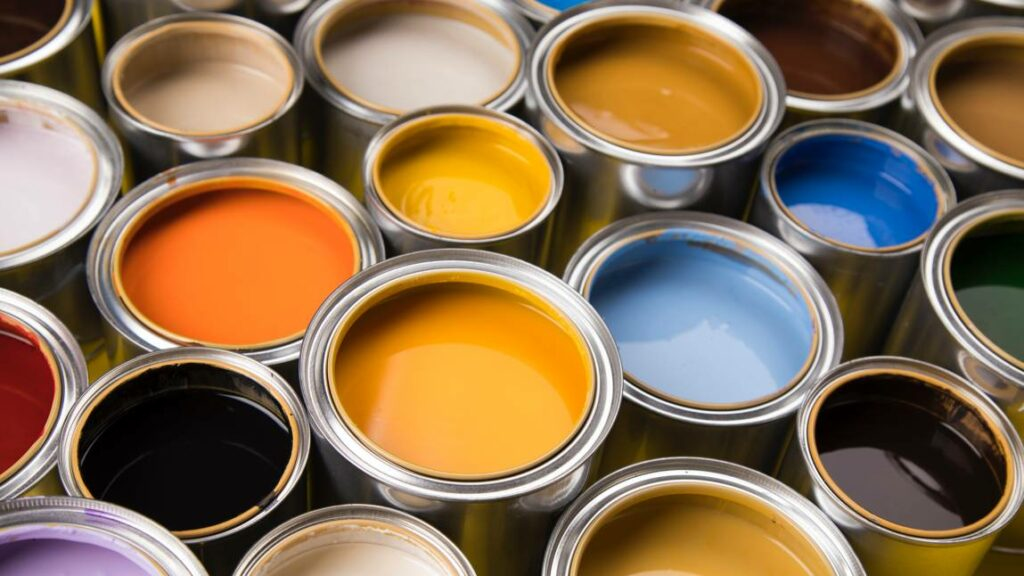
Check the paint can
The most straightforward way to determine the type of paint is by checking the original paint can since you can readily see if the paint is oil-based or water-based. Water-based paints usually have key terms like “latex” or “acrylic,” while “oil” and “alkyd” are used to identify oil-based paints.
Water test
If you threw away the paint can, or can no longer find it, do a simple water test to determine what type of paint you’re dealing with. If the paint softens and becomes tacky or starts to dissolve, it’s likely water-based. On the other hand, oil-based paints will not show any change with water since they are not water-soluble.
Determine what it smells like
Oil-based paints typically have a stronger, more pungent odour compared to water-based paints due to the solvents they contain. They also take longer to dry. If you remember the paint being particularly smelly and taking a long time to dry, it might be oil-based. Water-based paints have a milder odour and dry relatively quickly.
The essential steps to removing paint from the carpet
Step 1: Blot and scrape away the paint
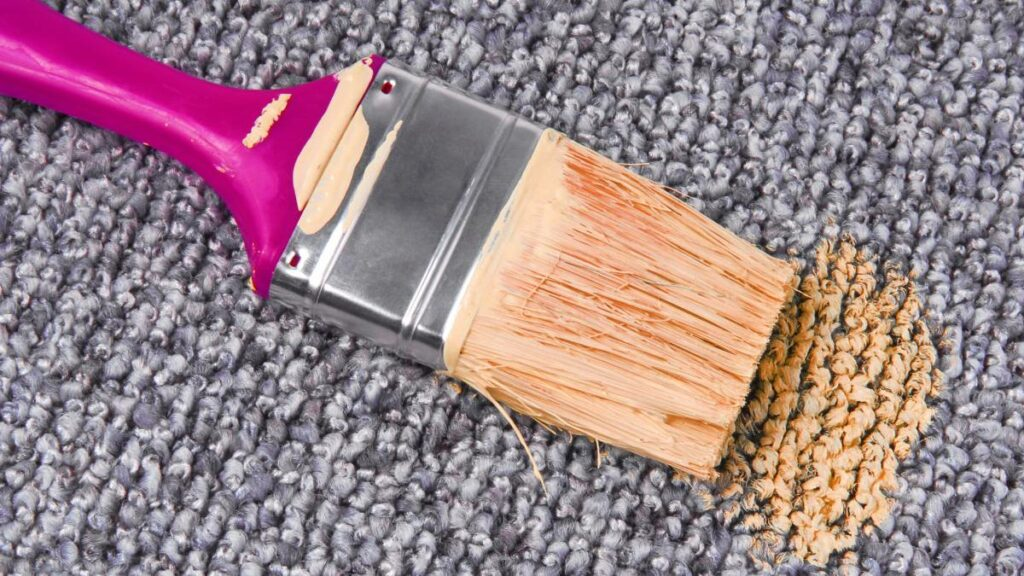
Before you apply any alcohol or chemical solutions, the first step is to always try to remove as much of the spilled paint as possible. If the paint is still wet, you can use clean towels to blot the affected area gently.
As much as possible, avoid rubbing the towels against the carpet, as this can further shove the paint deeper into the fibres. For dried paint, use a scraper, spoon, or dull knife to lift off the paint from the carpet. Be careful not to pull the fibres out.
Step 2: Grab your cleaning agent/solution
Choose a cleaning solution based on the type of paint you’re dealing with. For water-based paints, a mixture of warm water and mild dish soap often works well. Dish soap’s mild formulation and vinegar’s acidity help break down the paint, making it easier to lift from carpet fibres without causing damage.
Mix a few drops with warm water to create a soapy solution, apply it to the stained area, and gently blot the wet paint. This method is safe for most carpets and is particularly effective for fresh paint spills.
For oil-based paints, you might need a bit of rubbing alcohol or a specialised carpet cleaner designed to handle greasier stains. Just add a small amount of alcohol to a clean piece of cloth and gently dab it onto the paint stain. The alcohol breaks down the paint’s structure, making it easier to blot away.
Step 3: Clean and rinse
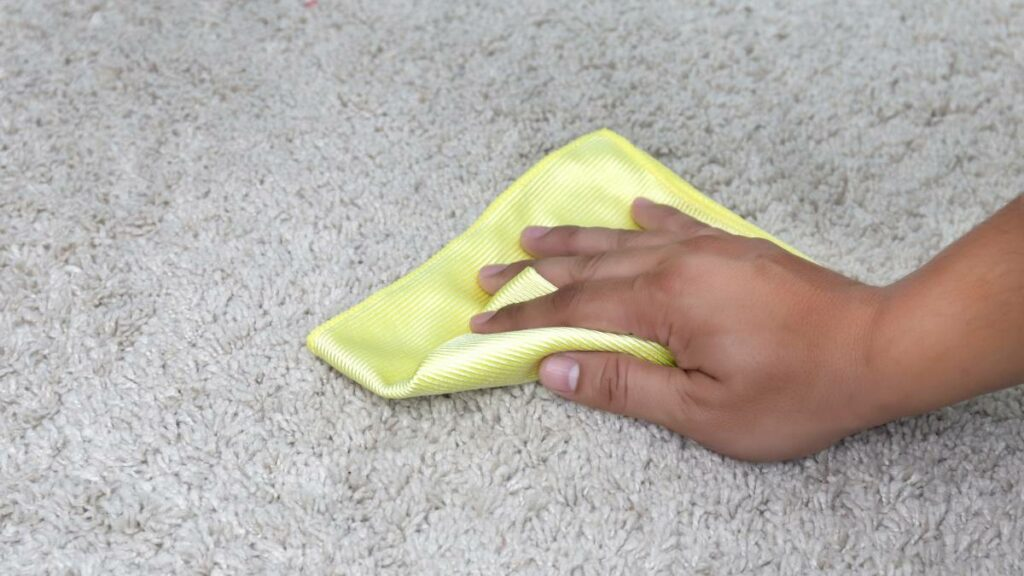
Using a clean cloth, sponge the cleaning solution onto the stain, working from outside to avoid spreading the paint. You can grab a toothbrush to get into those stubborn stains. Use a light, circular motion to lift the paint from the fibres. Let the solution sit for a few minutes for tougher or stubborn stains.
Once the paint starts lifting, use a new cloth dampened with clean water to blot the area and remove any soap or cleaning solution residue.
Step 4: Repeat the process if necessary
Some paint stains may be tougher to deal with and might require a few rounds of treatment. If the stain persists after the first attempt, repeat the cleaning process. Each time, be sure to use a clean cloth and fresh solution to avoid reintroducing the paint or dirt into the carpet.
Step 5: Dry and vacuum the area

After successfully removing paint in the affected area, it’s important to dry the carpet thoroughly. Press clean towels into the carpet to absorb excess moisture. Then, allow the area to air dry completely.
For a faster drying process, you can use a fan or hair dryer. Once dry, vacuum over the area to lift the carpet fibres and restore its normal texture.
Dealing with stubborn paint stains
Dealing with stubborn, dried paint stains on carpets requires a bit more patience and effort but is often manageable with the right approach.
Identify the paint type
Determine whether the paint is water-based or oil-based, as this will influence the removal method. Water-based paints are more forgiving and can often be treated with household solutions, while oil-based paints may require stronger solvents.
Scrape off excess paint
For dried paint, gently use a scraper, spoon, or dull knife to chip away as much of the paint as possible. Be sure you exert enough force to remove the paint without damaging the carpet or its fibres.
Apply heat
For water-based paints, use a hairdryer on a low setting to apply heat to the dried paint. This helps soften the paint, making it easier to scrape or lift off.
Use rubbing alcohol
Oil-based paint is generally more stubborn than water-based paint, especially when dry. Instead of applying heat or using a spray bottle with a soapy solution, oil-based dried paint can benefit more from rubbing alcohol and easily remove carpet fibres.
Rinse and repeat
Rinse the treated area with clean water and blot dry. If the stain persists, repeat the process until you see improvement. Patience and repetition are often necessary for dried paint removal.
Preventing future paint woes
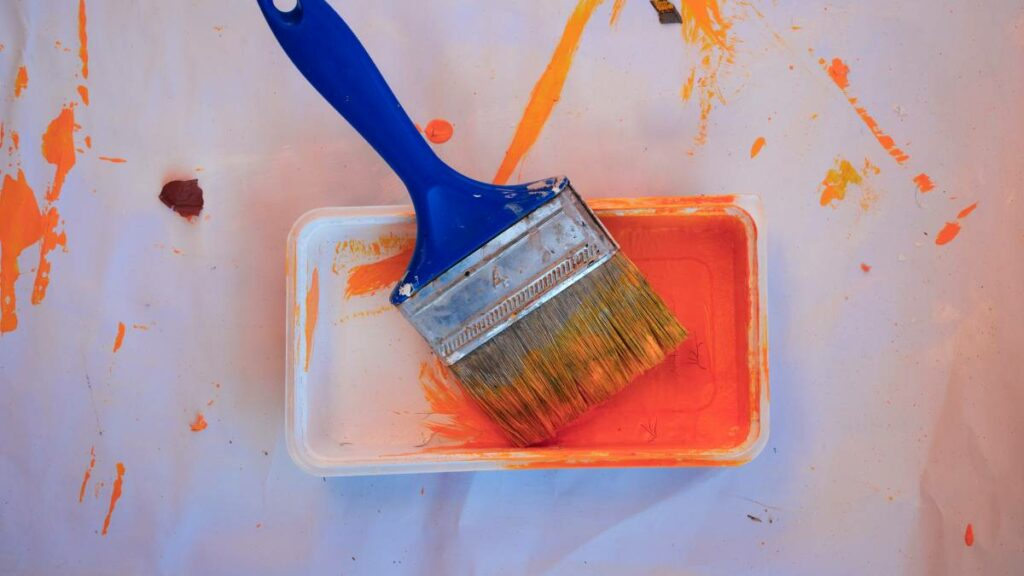
Keep paint away from carpeted areas
Designate a specific zone for mixing paint, loading brushes, and cleaning rollers that’s far removed from any carpets. Consider laying down a secure pathway of drop cloths or plastic sheeting to protect the carpet if you have to use paint near them
Consult professional experts
Depending on your budget and financial capacity, you can choose to do your paint job yourself or get professionals to do the work for you.
Seeking the help of painters can help you complete the job faster and more efficiently than the average DIYer. They use techniques and methods that ensure paint is applied efficiently and cleanly, avoiding accidental drips. Professional painting services are insured, offering you protection against any unlikely damage that might occur during the job.
Utilise smaller containers
Smaller containers are easier to handle, especially when painting areas that require frequent movement or precision. This is also a good idea to follow when you use painting tools like spray guns or paint rollers. Doing this can significantly reduce the risk of accidents and spills in the process.
Choose containers with tight-fitting lids to secure the paint when not used. Always fill them over a sink or a covered surface to catch any accidental drips.
Have cleaning supplies ready
It should include clean rags or paper towels, a spray bottle, a water container, and a suitable cleaning solution for your paint type. Having these ready can enable quick response and immediate action should spills occur.
Use drop cloths or tarps
Secure the edges with painter’s tape to prevent slippage and spills. Both plastic and cloth tarps can be used, but fabric drop cloths are preferred as they absorb paint rather than allow it to pool. Remember to overlap the cloths or tarps to create a continuous barrier with no gaps for the paint to seep through.
A spotless finish!
Accidents during a paint job can’t be helped, but don’t let these mishaps deter you from achieving the perfect finish for your home. Knowing how to get paint stains out of carpet surfaces and being quick on your feet can mitigate most accidents with minimal impact.
Taking preventive measures and considering hiring professional painters for more complex projects can greatly reduce the risk of spills. Entrusting this tricky task to a professional can ensure a smooth and successful painting project.
FAQs on removing paint from carpet
Can you use mineral spirits on the carpet?
Using mineral spirits on carpets is a double-edged sword. Mineral spirits are a solvent that can effectively remove oil-based substances from surfaces, including some types of paint, grease, and tar from carpets.
However, some carpet materials, especially synthetics, can be damaged by mineral spirits. They may dissolve the glue in the backing or affect the fibre’s integrity. Using them requires adequate ventilation and protective gear, such as gloves and masks.
Will baking soda get paint out of the carpet?
Baking soda can effectively remove paint from carpet, especially if the paint is still wet. Its absorbent nature helps lift the paint from the carpet fibres, making cleaning easier.
How do you get gloss paint out of the carpet?
Removing gloss paint from the carpet can be challenging, especially if the paint has dried. Gloss paint is usually oil-based, making it more resilient and harder to remove than water-based paints.
By acting quickly, however, you can significantly increase your chances of successfully removing gloss paint from your carpet without causing damage.
How much will your job cost?
The Oneflare Cost Guide Centre is your one-stop shop to help you set your budget; from smaller tasks to larger projects.


